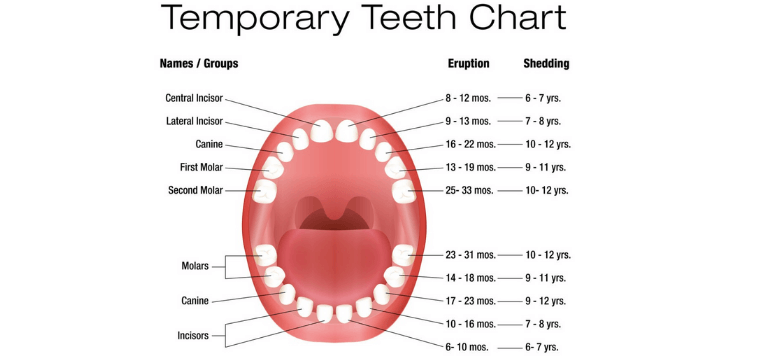Milk Teeth Eruption And Shedding
It would be quite interesting to know that our teeth start to develop within our mother’s womb right after a few weeks of conception. Milk teeth also called deciduous teeth or famously known as primary teeth are the first set of teeth that erupt in our oral cavity within six months of birth. Lower front teeth are the first teeth to appear in the oral cavity six months after birth. Different milk teeth show variations in shape, function and shedding pattern. To know more fascinating facts about baby teeth and how to take care of it, let’s keep reading!
For all your queries regarding Painless dentistry for kids in Seawoods, call us!!
Humans have two sets of dentitions, primary or deciduous dentition and secondary or permanent (adult) dentition. Generally, we have about 20 primary teeth and 32 permanent teeth. The primary teeth gradually appear through the gums during the first two and a half years of life. The four front teeth—two upper and two lower teeth usually erupt first, beginning as early as six months after birth.
Most children develop a full set of primary teeth by the time they reach three years of age. The child’s jaws continue to grow, making space for the permanent (adult) teeth that are in the formative stage and begin to erupt at about age six years. Primary teeth begin to shed between ages six-seven years. This process continues until the child is about age 12 years old.
ERUPTION PATTERN OF PRIMARY TEETH
Children show different patterns of tooth eruption and shedding, but most of the kids show a specific sequence. We see the following types of teeth in the primary dentition ie: two sets of incisors, canines and molars in both upper and lower jaw respectively. Beginning from sixth month after birth, the primary dentition period lasts till about six to seven years of age.
The eruption sequence of primary teeth is as follows :
|
Teeth |
Eruption time |
Shedding time |
|
Lower central incisor |
6 months |
6-7 years |
|
Lower lateral incisor |
7 months |
7-8 years |
|
Upper central incisor |
7 and a half months |
6-7 years |
|
Upper lateral incisor |
9 months |
7-8 years |
|
Lower 1st molar |
12 months |
9-11 years |
|
Upper 1st molar |
14 months |
9-11 years |
|
Lower canine |
16 months |
9-12 years |
|
Upper canine |
18 months |
10-12 years |
|
Lower 2nd molar |
20 months |
10-12 years |
|
Upper 2nd molar |
24 months |
10-12 years |
Children will show the following symptoms while teething or tooth eruption :
- Irritability
- Soreness and swelling of gums
- Excessive and constant drooling of saliva
- Biting on hard objects
- Sleep disruptions
One can follow these five tips for easing discomfort while the child is teething :
- Rub the child’s gums gently with your finger, a cold spoon, or wet gauze.
- Feed soft and cold food.
- Provide a pacifier or let your child suck on a clean, cold and a moist cloth.
- Do not cut the child’s gums, apply powdered products or aspirin, or give any form of alcohol.
- If teething symptoms are severe, pediatric dentists can recommend mild pain relievers.
Visit your nearest pediatric dentist around six months after the first primary tooth erupts. Maintaining routine follow-up visits and early dental care practices will help the child. Our dental treatment for kids in Seawoods has all the necessary services under one roof. Call us to know more.


